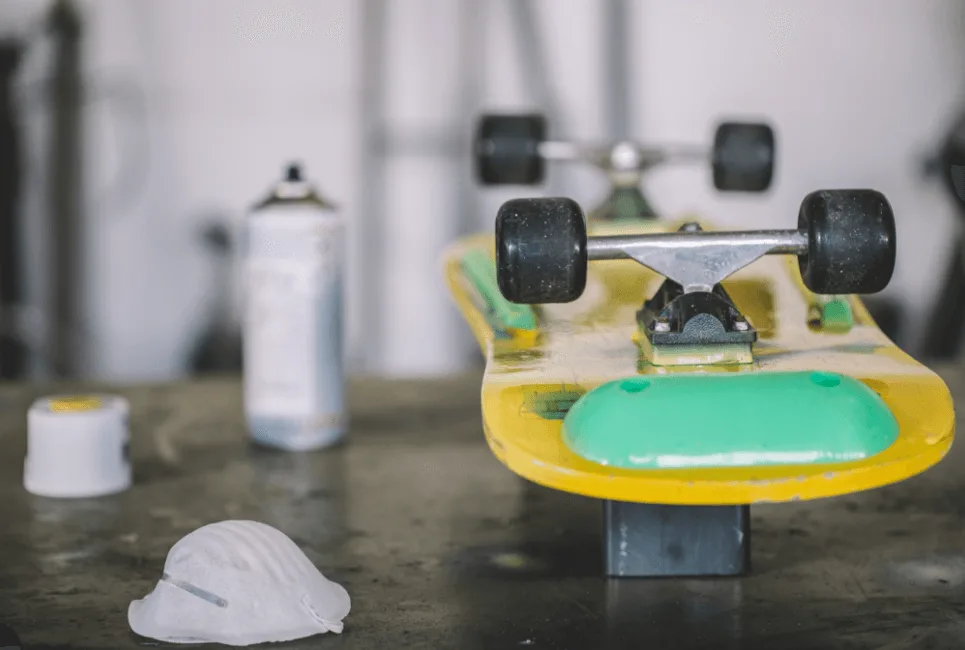- The 21 Best Skateboard Shoes — Reviews - September 29, 2020
How to Find the Best Skateboard Components
Whether you are building a new skateboard from scratch or looking for replacement parts, having a working knowledge of all the skateboard components is key.
Even if you have a good base of technical knowledge, knowing where to buy skateboard components online is ALSO a key data point. It’s a LOT easier to find baords and parts online these days, but it’s still a bit of the Wild West when it comes to top notch customer service and pricing consistency.
For these reasons, our team has put together this handy resrource page as a comprehensive walkthrough of all the key components, where to buy them, and what to pay for them.
Skateboard Deck
Skateboard decks are clearly the most critical component of a quality skateboard. Depending on your intended use, stability (longer, heavier decks) vs flexibility (shorter, lighter decks) come into play. Regardless, a quality deck is closely correlated to the quality of the material used in the production process.
Shortboard Decks
Shortboard decks are the most common and primarily meant for street skateboarding and vert skateboarding. Most skaters start with a short board for tricks and experimentation.
Longboard Decks
Longboard decks are meant (as the name sounds) for longboards, sometimes interchangeably referred to as Cruisers. A long board is ideal for speed skateboarding with better innate balance and stability. A good longboard deck will have these key attributes of balance, stability, and control.
Skateboard Trucks
Skateboard trucks are the T-shaped mounts on the underside of the board. Think of this as the chassis for your board. Bad trucks not only lead to poor performance, but are also a significant safety hazard.
Skateboard Wheels
Without wheels you can’t move! Size DOES matter. No kidding. The size and shape of skateboard wheels has a lot to do with how you intend to ride. Here are some things to keep in mind:
Wheels range in size from 48mm to 60mm and there are over 15 common brands (and many more niche brands) to choose from. The higher the size the higher the top speed, but the slower the initial acceleration.
A range of 52mm to 56mm is considered a “common” skate wheel.
Byond size, there is the wheel durometer which refers to the “hardness” of the wheels. Harder wheels can slide more, while softer wheels are more sticky to surfaces.
Check out our list of best wheels for Longboards.
Hard Wheels
Hard wheels are generally 95a and above, capping out at 101a.
Soft Wheels
Soft wheels are generally 92a and below, with the softest wheels reaching down to 73a.
Skateboard Grip Tape
Believe it or not, there are hundreds of brands and styles of grip tape out there. So what are the key considerations here?
Some good aspects to consider are the adhesive strength (will it hold up over time), durability of the grip material (again, for longevity), and whether or not the tape has anti-bubble properties.
Skateboard Bearings
The bearings on a skateboard might seem like an insignificant component, but don’t be mistaken! Bad bearings can be a chronic complaint for boarders. In fact, it’s common to blame the board when in fact it’s just the bearings that are sub-par.
Skateboard Risers
Risers are another subtle component, having so much to do with skateboard style. There isn’t a “right answer” here other than to know your skateboard style with the following rules of thumb when it comes to skateboard hardware:
- No Riser Needed: 7/8″ up to 1″ hardware
- 1/8″ Riser Needed: 1″ to 1 and 1/8″ hardware
- 1/4″ Riser Needed: 1 and 1/4″ hardware
- 1/2″ Riser Needed: 1 and 1/2″ hardware
Skateboard Shock Pads & Bushings
Skateboard shock pads are little rectangular washers placed between the truck and deck of a skateboard. Shock pads alone are not critical, but depending largely on your skateboarding style, could be an important factor. For example, agressive skateboarding can lead to “wheel bites” where the deck comes into contact with the wheels.

